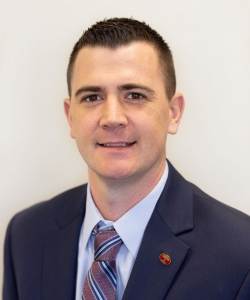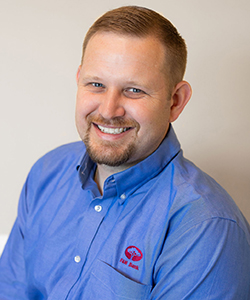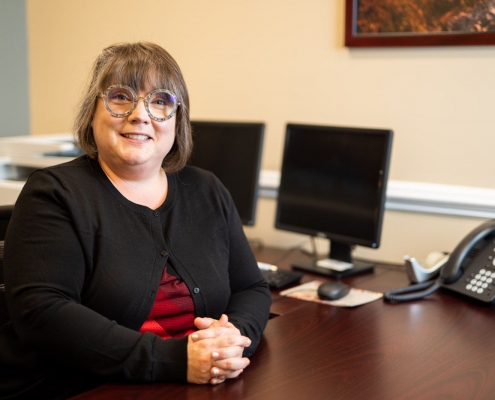Since the Coronavirus (COVID-19) pandemic started to affect the American economy in March, the stock market has been fluctuating along with the news headlines. For many people, especially those close to retiring in Virginia, 401(k) management is a big concern. As a longtime community bank serving the Shenandoah Valley, we have plenty of experience helping our customers navigate historic crises. In this article, our Wealth Management team offers its best advice for preparing, protecting, and managing your retirement savings throughout economic uncertainty and recession.
3 Foolproof Ways to Prepare Your 401(k) For a Recession
You can take these steps now if you’re still employed, or save the advice for a post-coronavirus world.
1. Start and grow your emergency savings account.
An emergency fund is the foundation of healthy finances. If you haven’t started one yet, aim for a small starter goal, such as $500 or $1,000. That’s enough to cover any unexpected expenses, such as a car or home repair, or medical bill. Once you reach your goal, use the momentum from your “win” to keep going, one month of living expenses at a time, until you’ve saved 6 months to a year of your basic monthly budget. Depending on how secure your job and industry are, you may not need quite that much. However, the 2020 Coronavirus pandemic has taught all of us the necessity of preparing for the unexpected.

Once you have a good thing going with your emergency fund, resist the temptation to use it for non-emergencies. For example, down payments on a house or car should be saved for separately. Your emergency fund is for the large expenses you didn’t see coming and can’t cover with your monthly budget. In other words, an emergency fund keeps you from going into debt. And, if you lose your job, it could keep you out of bankruptcy.
2. Reduce spending and look for “extra” money.
When times are good, everyone should be focused on paying down debt and/or building savings. For example, consider the extra money you typically receive in a year:
- Annual or quarterly bonuses
- Gift money on your birthday and other holidays
- Tax refund
- One-time inheritance
- Contest or lottery winnings
While it can be tempting to spend this money right away, try to earmark at least half to put in your emergency savings account or to pay down credit card and/or car/personal loan balances. When a downturn or recession comes, you will be glad to have a bigger emergency fund or a smaller line item in your budget for monthly debt payments.
Another way to “find” extra money is to pare down discretionary spending on food and drinks, entertainment, subscriptions, etc. For example, if you are staying at home right now, you can put the money you save on transportation and discretionary purchases into your emergency fund or make an extra debt payment.
3. Take advantage of free matching money at work.

Are you leaving money on the table? Many employers will match up to a certain percentage of your own retirement account contribution. To grow your 401(k) savings more quickly, make sure you’re putting enough in to take full advantage of your employer’s match.
3 Surefire Ways to Protect Your 401(k) From a Recession
Now that we’re in what could be an economic recession, here’s what you can do to protect your retirement investing.
1. Adjust risk to your age.
Investing is a long game, but as you near retirement age, your risk tolerance diminishes. That doesn’t mean you should pull all of your money out of the market–you need to earn interest on it to keep up with the pace of inflation. What it does mean is that your investment approach should be adjusted to lessen risk. You should be able to do this yourself by logging into your retirement account. If you work with a financial planner, they can help you adjust your portfolio allocation to meet the specific needs of your retirement goals.
If you’re worried about having enough money in your 401(k) for retirement, the IRS permits “catch-up contributions” of an extra $6,000/year for people aged 50 and up.
2. Diversify your investments.

Whatever stage of life you’re in, diversifying your investments can help reduce the risk of one bad stock negatively impacting your entire portfolio. Instead of trying to pick and choose stocks on your own, go for low-cost index funds that provide exposure to a lot of companies in different industries and sectors. Our Wealth Management team can also help you optimize your investment portfolio.
3. Keep contributing.
One of the best ways to protect your 401(k) is to continue making regular contributions. For example, don’t get scared by the changing market and lower your automatic payroll deduction. If your income or financial situation has changed in the wake of the pandemic, at least let your 401(k) balance keep growing by leaving it alone. When you find another job, you can start contributing again.
3 Tips for Managing Your 401(k) During a Recession
Similarly, here’s how to stay the course for however long this lasts.
1. Do nothing.

If you’re an everyday investor who doesn’t know much about the stock market, your best option is to do nothing. If you make changes out of an emotional reaction to scary headlines, you’ll likely do more harm than good to your portfolio. Aside from a few outliers, most people don’t “beat the market.” Stay the course, talk to your financial advisor, and remember that investing is a long-term game.
2. Stay invested in necessities.
Allocating assets to investments of essential items can help off-set any negative hits your portfolio may take during a recession. Essential items and services can be more “stable” investments since they don’t see as much of a drop in usage from consumers during recessions.
However, we are not recommending that you move your entire portfolio to essential-service investments. As mentioned earlier, you want to avoid making large changes to your portfolio at the same time.
3. Ask for help.

If you’re concerned about managing your investment portfolio and finances, talk to a financial advisor. A professional wealth manager can help you evaluate your options and help you make the best wealth-building decisions for you.
Make an appointment with one of our Osaic Institutions Financial Advisors today!
Our Osaic Institutions financial advisors are experienced at planning for your future. We can guide you through retirement planning, personal insurance, and short-term financial goals to create a plan you can commit to and follow. Meet our experienced financial advisors and make your appointment today!
Investment and insurance products and services are offered through Osaic Institutions, Inc., Member FINRA/SIPC. F&M Financial Services is a trade name of F&M Bank. Osaic Institutions and F&M Bank are not affiliated.
Securities and Insurance Products:
Not Guaranteed by the Bank | Not FDIC Insured | Not a Deposit | Not Insured by Any Federal Government Agency | May Lose Value Including Loss of Principal





















